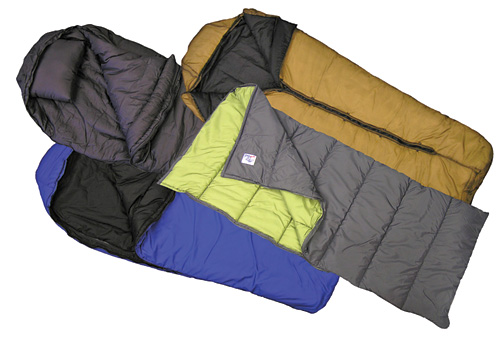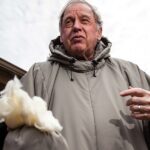 If Doug Hoschek can’t get REI to consider carrying a line of sleeping bags, then probably no one can.
If Doug Hoschek can’t get REI to consider carrying a line of sleeping bags, then probably no one can.
BY JON BELL
 If Doug Hoschek can’t get REI to consider carrying a line of sleeping bags, then probably no one can.
If Doug Hoschek can’t get REI to consider carrying a line of sleeping bags, then probably no one can.
The impassioned 68-year-old veteran of the textile industry preaches a mean gospel for sleeping bags, outerwear and the insulation that fills them from Wiggy’s, a Colorado company founded by longtime friend and associate Jerry Wigutow. He got to know bigwigs like Jim Whittaker, the one-time CEO of REI and the first American to summit Mount Everest.
And around 1980, Hoschek himself helped develop and sell one of the most ubiquitous fabrics in the outdoor world — Polarfleece — while on the payroll at the famed Massachusetts textile company Malden Mills.
“For 15 years, I basically controlled who got Polarfleece in the U.S.,” says Hoschek, whose run with the fabric essentially ended in 1995 when a fire burned Malden Mills to the ground.
With most textile manufacturing now outsourced overseas and stateside retailers sticking with their foreign supply chains, Hoschek has had a tough time getting Wiggy’s bags, which are popular with the U.S. military, into the broader outdoor market. Undaunted, Hoschek opened his own Wiggy’s retail store in Bend’s Old Mill Marketplace in early October, which sells Wiggy’s American-made sleeping bags and outdoor clothing.
Competing with big names like The North Face and Marmot won’t be easy, but Hoschek is confident in the products and thinks consumers will be too. He’s also encouraged to hear that Wiggy’s Alaska, a small store Wigutow helped start in Anchorage, has annual sales north of $500,000.
Beyond finding success through the Wiggy’s store, Hoschek also sees a greater goal in his current endeavor: revitalizing domestic manufacturing and restoring Oregon to its proper place as a synthetic and natural textile powerhouse. One idea: helping Wigutow possibly relocate his manufacturing operations — with job opportunities for up to 40 people — to Bend in 2013. Hoschek says he ran his thoughts on reviving Oregon’s textile sector past Gov. John Kitzhaber earlier this year.
“He looked at me, his eyes got wide and he said, ‘How are you going to do it?’” Hoschek says. “And I said, ‘Just watch.’”



